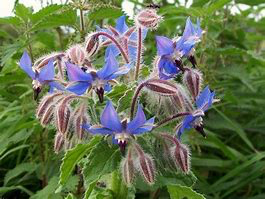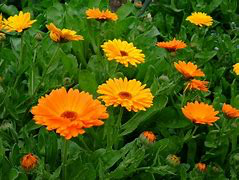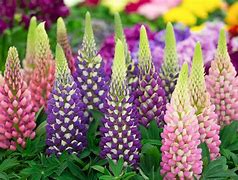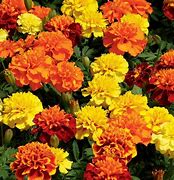

Borage grows into a wide, gangly plant that is right at home in a vegetable garden. The flowers are a beacon for bees and a delight for gardeners. Both its leaves and flowers are edible with a subtle cucumber flavor. The plant is fast growing and can be directly sown in the ground. After that, it tends to reseed itself.


Calendula (Pot Marigolds) should not be confused with the French marigolds described above, but these too can be a wonderful flowering plant to grow in a vegetable garden. Calendula also attracts a range of pollinators – bees, butterflies and more. It also attracts predatory insects, and acts as a trap crop for aphids and other pests.


Cosmos: Few flowers grow as easily and bloom as profusely as cosmos. And those blooms can be put to practical use in the vegetable garden, as they attract many helpful insects. For instance, if you want to draw in green lacewings, choose a white or bright orange variety, such as "Cosmic Orange." Green lacewings are voracious eaters, vacuuming up all sorts of soft-bodied insects, including aphids, scale, and thrips. Thus they are considered a beneficial insect and making them at home in your vegetable garden will help you prevent pest problems.


Lavender: It's not difficult to find a reason to plant some lavender. In addition to its beautiful blooms and much-loved fragrance, the herb can be used to repel several common vegetable garden pests including cabbage moths which find the scent offensive.


Lupins are a nitrogen fixing flowering plant that can also work well in crop rotation. Like peas, beans and other legumes, lupins will help to add nitrogen to the soil in your vegetable garden. These are also a bee friendly plant, and will help to attract a range of beneficial wildlife to your growing areas.


Marigolds deter pests both above and below the ground, and they look great doing it. Marigolds have also been credited with repelling squash bugs, thrips, tomato hornworms, and whiteflies. The downside is that they attract slugs. Of course you can turn that to your advantage by making marigolds a bait plant for luring slugs into your beer traps.


Nasturtiums prefer cooler temperatures and continue blooming well into the fall. Nasturtiums offer some protection from squash bugs and beetles. They also are favored by aphids and make a great trap crop. But they are one of the more delicious edible flowers (and leaves), so do not sacrifice them all to the insects.


Nectar-rich zinnias are magnets for bees and other pollinators including hummingbirds. The paler, pastel varieties seem to be attractive to Japanese beetles so should be avoided.
